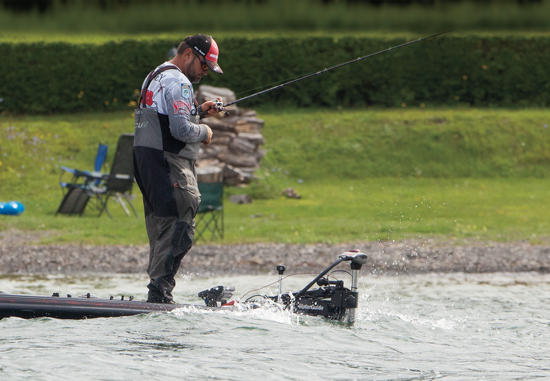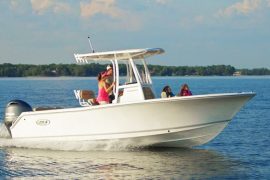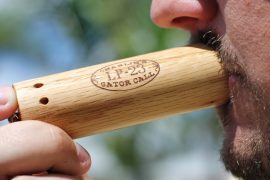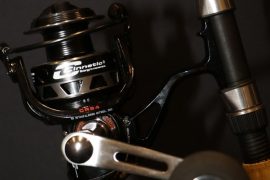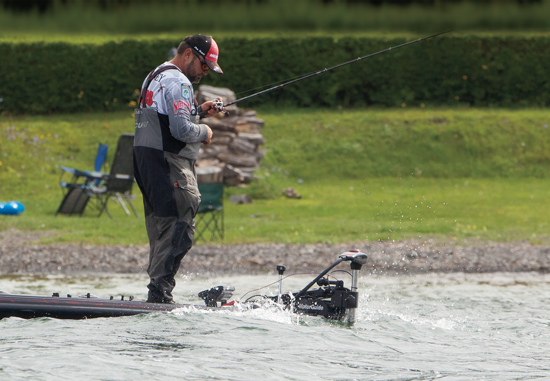
Bad weather and strong winds have hampered or ruined many a fishing trip. As anglers pull up to the launch and are greeted by angry water, they may turn and head home. Or the day’s forecast may keep them away.
But professional anglers can’t wimp out. Tournament schedules are set long in advance, and only the most dangerous conditions cause an event to be canceled. Through it all, many have found that rough waters can lead to fine fishing. Bassmaster Elite Pro Russ Lane, 2014 Bassmaster AOY Greg Hackney, Canadian sharpshooter Chris Johnston, and 2013 Elite Series champ Brandon Palaniuk and aren’t among those intimidated by wind.
Spotted Bass Shootout
Bassmaster Elite angler Russ Lane targets spotted bass on the Coosa River Chain near his home in Alabama, as well as other waters across the Southeast and Midwest. He doesn’t mind fishing in wind. “In clear water, windy conditions can trigger fish to feed, as it gets the ecosystem moving,” Lane says.
During the Prespawn Period, spotted bass relate to the first transition outside spawning flats. Lane relies on a SPRO Fat Papa 55 crankbait in crawfish hues, since its tight wobble suits the sluggish behavior of spots in 40°F to 55°F water. He works it with a stop-and-go retrieve, using a Castaway Skeleton Crankin Rod with a 5:1 gear ratio and 10-pound-test Sunline FC Sniper. When spots hold deeper, he may switch to 8-pound fluoro, since these habitats don’t have many snags.
He’s found that wind brings spotted bass off the bottom and away from the banks. But if winds become strong enough to create muddy conditions, bass move shallower and closer to cover. In that situation, he works shoreline wood with shallow-running crankbaits.
In reservoirs of the Ozarks, bluff banks and transitions are key locations for spots in spring. Look for areas where the bank is composed of big chunk rock and where the bluff ends and transitions from chunk rock to pea gravel occur. Lane pays attention to the angle of shoreline rock, focusing on areas that change from steep bluffs to flatter banks.
Spotted bass typically spawn in water from 60°F to 68°F, and they move to areas that are protected by big rock, but offer small flat pockets of cobble and gravel 5 to 10 feet deep. The inside corners of pea gravel points with larger rock on the flat also hold fish around spawning time.
On windy days during the spawn, Lane fishes a 1/4-ounce Buckeye Spot Remover and green pumpkin 4-inch Big Bite Baits Trick Stick with the tail dyed chartreuse, employing a slow steady drag. “When spots are bedding, they nip at baits, so it’s best to use something small,” he says. “You often can’t see the bed, since in clear water, they may nest 6 to 7 feet deep, just out of sight. “Work these areas patiently,” Lane recommends, “bites may feel like a sunfish nibbling on your lure.”
If wind creates a mudline, Lane fishes it along shallow points since spotted bass sometimes hold inside that line, using it as cover. He works spinnerbaits and crankbaits up high, as bass tend to move off bottom in these conditions. And if wind pushes current around a point, he probes any developing current seams there. “I begin by casting into the current and retrieve with it, but then change angles to bring the lure against the flow,” he says.
Once summer arrives, spotted bass tend to move offshore. “I look for large rocks and brushpiles, then cast toward them with the wind at my back,” he says. “When it’s gusty, I often keep the boat pointed into the wind and cast back at an angle with a crankbait or shaky-head jig. You have a better sense of feel and greater casting distance from that position.”
Bucketmouth Blow Out
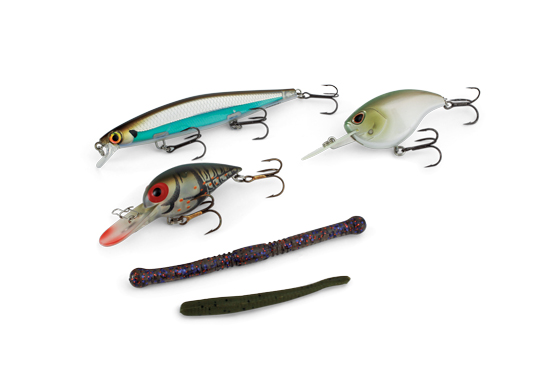
Bassmaster 2014 Angler of the Year Greg Hackney studies weather forecasts to anticipate fronts that typically bring windy conditions. “Often you get 2 or 3 warm days, followed by a cold front. That’s the day I want to be on the water. During prespawn conditions, bass feed heavily under darker skies and choppy conditions.”
When water temperatures range between 45°F and 50°F, his approach on highland reservoirs is to cover water fast, working a Strike King Pro Model Lucky Shad, in shad or perch patterns, along banks exposed to wind. He cranks it slowly with a Quantum KVD Crankbait rod and Quantum EXO 6:1 reel spooled with 10-pound Gamma Edge.
As waters warm toward 60°F, he shifts to shorelines strewn with rock and mud and fishes a crawfish-color Strike King KVD 1.5 square-bill crankbait in windy conditions. He bounces it through cover, letting it pause, then commence diving.
Hackney, a Louisiana resident, is best known for his prowess fishing vegetation for big largemouth bass. In those conditions, though, too much wind can hinder the bite. Although he won the 2014 Bassmaster Elite tourney at Cayuga Lake in New York, it wasn’t without drama. On the third day of that event, he was catching bass in vegetation standing in 17 to 18 feet of water and topping out 12 to 15…

